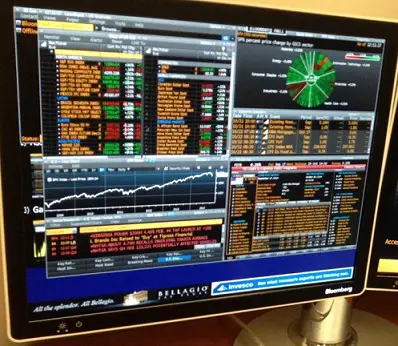As China began to soften its Covid-lockdown rhetoric, and Federal Reserve Chief Jerome Powell signaled interest rate hikes would begin to decelerate going forward, stocks extended gains in Asia.
Following Powell’s comments, the dollar fell against the majority of the Group-of-10 counterparts, the yen lifted to a three month high, and Treasury yields stabilized following sizable declines.
Equity futures were somewhat volatile, as European contracts rose. Hong Kong and mainland Chinese benchmarks rose over 1% in trading, and the S&P 500 rose swiftly, ending the month at the highest levels seen since mid-September, as tech stocks led the climb.
Asian sentiment got a boost when China’s Vice Premier Sun Chunlan, China’s top official in charge of the fight against Covid-19, said the nation was entering a new phase in its fight against the virus, now that the Omicron variant was weakening, and more Chinese have gotten vaccinated. The comments fed investor hopes China would move away from is stringent “zero-Covid” rules which swiftly impose sweeping lockdowns, and shutter the economy over relatively minor outbreaks of the virus. China’s complete reopening is seen as critical to the recovery of the global economy, and the avoidance of a global recession.
Powell’s comments were taken as more evidence the Federal Reserve will opt for a more muted 50 basis point interest rate hike at their next meeting, following four consecutive 75 basis point hikes.
Swaps market pricing indicates investors see a peak Fed funds rate hitting 5% in May. Before Powell’s comments, the indications were the market saw a peak hitting above that level in June.
Krishna Guha, head of central bank strategy for Evercore ISI said that stocks rose because Powell indicated a desire to balance tackling inflation with a need to support the economy. He added, “Most importantly for risk assets, Powell’s remarks embraced the return of some two-sided risk management. That is a big deal for equities and means an outsized move in stocks relative to the rates market is justified.”
Some however felt it was possible months’ end portfolio positioning may have amplified the price action.
Others noted that key gauges of third quarter economic activity were beginning to paint a mixed picture, with job openings in October falling. An overheated jobs market was one metric the Fed has pointed to, as indicative of inflationary pressures persisting. If the jobs market cools, the Fed may take that as indicative of the economy cooling, and inflation beginning its return to the Fed-s 2% target rate.
On Friday, a new jobs report will come out. Analysts forecast it will show 200,000 jobs being added in November, with unemployment holding steady at 3.7%, and average hourly earnings moderating.

